A blog about the sub-genre of found footage horror films
Don't wanna be here? Send us removal request.
Text
Spree: Film Analysis
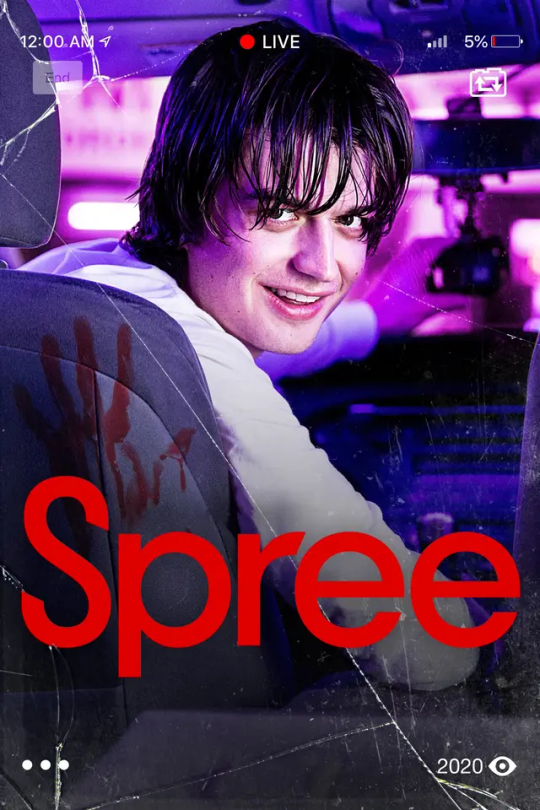
Spree (2020), directed by Eugene Kotlyarenko, represents every teenager’s dream: the dream of being famous on social media. The film follows Kurt Kunkle, played by Joe Kerry, as Kurt struggles to gain attention online. Kurt’s dream, like so many teens and young adults, is to become a social media influencer. Kurt, though, can’t seem to find a following, with at most a few dozen people watching his videos. In order to gain a bigger following, Kurt decides to livestream himself working for the rideshare app Spree and kill passengers he finds annoying or doesn’t like.

(Two passengers in Kurt's car)
Spree makes use of unique filmmaking methods found in the found footage sub-genre to tell Kurt’s story, with the film being comprised almost entirely of cellphone footage and GoPro dashcams in Kurt’s car. One moment Kurt will be talking to the GoPro, the next moment he is looking down at his phone and talking to the live stream chat, and then it’ll cut back to a different GoPro angle. This is a big part of why this film, along with the found footage subgenre matters: it is relatable to the audience. In the words of Roger Ebert in his 2020 review of the film, “Spree feels like a day spent entirely on the Internet, leaping around from YouTube to Twitter to Google to TikTok and back, never staying in one spot longer than a few minutes...” This style of filmmaking makes Spree appealing to a modern audience, one with short attention spans and a chronic addiction to social media. However, to some, the film can come off as messy and chaotic. In her review of the film, Jeannette Catsoulis has this to say: “Directed by Eugene Kotlyarenko, “Spree” is an aesthetic nightmare of screens-within-screens, splitting and reshaping and crawling with real-time commentary on Kurt’s bloody deeds. This infection of our movie visuals with hectic impersonations of online behavior has been spreading for a while now, and “Spree” reaches some kind of nadir. Moreover, the film’s lack of perceptiveness — “I May Destroy You” on HBO currently offers far greater insight into the dark seductions of influencer culture — is disappointing. Kotlyarenko seems entirely unaware that his escalation of gore suggests he’s just as thirsty to be seen as his sick protagonist.”
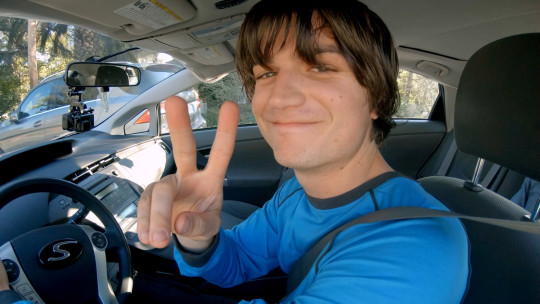
(Kurt looking at one of the GoPros in his car, showing the simplistic filmmaking style used in many scenes throughout the film)
This idea of fast-paced content is embodied in the film's opening scenes. The first few minutes are full of constant cuts between Kurt drawing on a whiteboard, then cutting to a YouTube video of his, then back to the whiteboard, and then to a live stream on the streaming app LiveFly. There is a scene around the 1:45 mark showing Kurt live-streaming with his dad, holding his phone vertically with semi-shaky footage and talking to the handful of people watching the stream. Most films would never utilize this type of footage because it comes off as chaotic and unprofessional, but for Spree, this is what makes the movie. People are used to watching this type of inexperienced, vertically filmed content every day. TikTok, Snapchat, and Instagram are almost entirely comprised of these types of videos, and people love them. By incorporating these videos, Spree breaks many boundaries that films have stayed within and brings a sense of familiarity to its audience.
youtube
Another example of this can be found later on in the movie. Kurt picks up three influencers and convinces them to go to a “cool spot” where the influencers can make it look like they’re on a fun adventure. This spot ends up being a junkyard, and Kurt begins driving around at high speed with two of the people recording themselves standing up through his sunroof. However, Kurt has a more sinister plan for these three influencers. Two wild dogs appear in front of the car, with Kurt stopping and allowing them to jump up onto the roof and attack two of his passengers. While they are being mauled, Kurt kills the influencer sitting next to him in the passenger seat. All of this, of course, is being live-streamed on the internet by Kurt. Throughout this scene, there is constant cutting between the different GoPro cameras and the videos being recorded on the influencer’s phones. This makes for a scene full of energy and chaos while also cutting to the right angle at the right time, such as cutting to the influencer’s phone when they drive under a gate, nearly getting their head cut off.
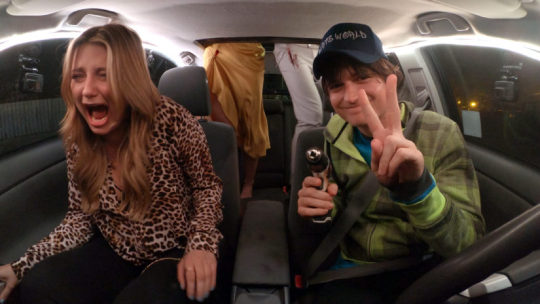
(A still from the scene mentioned above)
This scene, and the movie as a whole, also provide a shallow critique of influencer culture. The whole premise of the film is about a lonely kid wanting to get famous on the internet, going to extreme lengths (murdering his passengers) to try and attract attention. Kurt engaged in increasingly erratic behavior in his chase for fame, including murdering his own friend to steal his viewers. In a messy, roundabout kinda way, Spree is a film about the dangers of going too far in your pursuit of fame, all while trying to remain relatable through its unique film style.
1 note
·
View note
Text
Blair Witch: The Directors
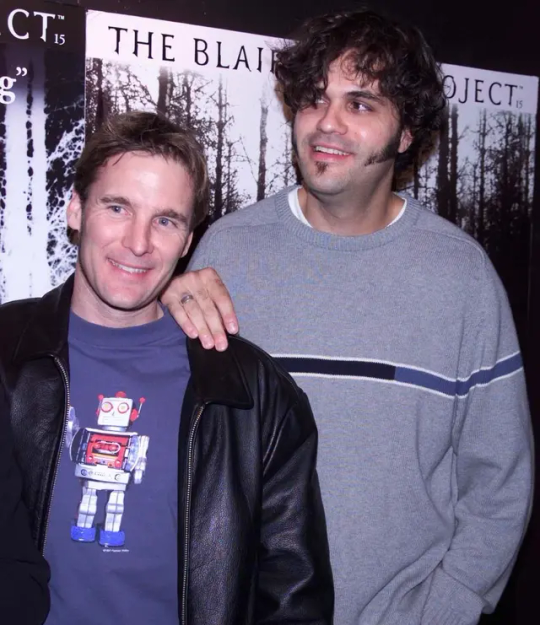
The Blair Witch Project (1999), covered in last week’s blog, was directed by Daniel Myrick and Eduardo Sánchez. This week we will be focusing on the directors themselves.
youtube
The duo came up with the idea in early 1993 and had been inspired by various films from the 1970s. Films like Freddy’s Dead had come out and done well, but according to Myrick there “really wasn’t anything that was scaring us.” There was nothing truly scary, such as The Shining or The Exorcist that would “have an effect on you when you left the theater.” When making their film, Myrick and Sánchez wanted to, as they put it, get back to basics and what freaks you out as a child. The directors spoke about how they couldn’t review the footage after it had been shot, and the footage only came in about 3-4 days after shooting. They had to put their trust in the actors and were happy with the result.
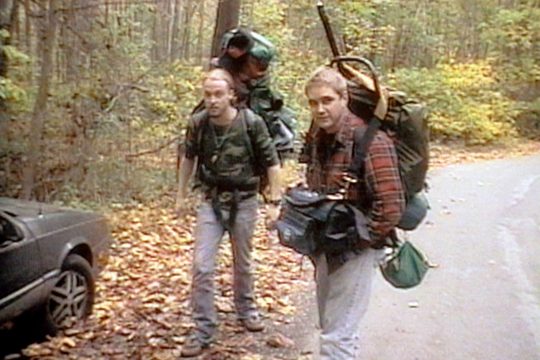

In his article about The Blair Witch Project, which also includes an interview later in the article, Scott McDowell critiques the film when he says “...Blair Witch offend ed me by equating student filmmaking with haphazard camera movement and inconsistent focus. As a teacher of film production for over a decade, I have never seen a student production as technically flawed as the images in Blair Witch. As a result, much of my initial negative reaction to the film was a reaction to the negative stereo type of student filmmaking it presented.” However, McDowell also praises the director’s use of a loose script with the documentary filmmaking style, saying it undergirds “...the premise that we are watching the found footage of a lost film crew.” (Page 141)
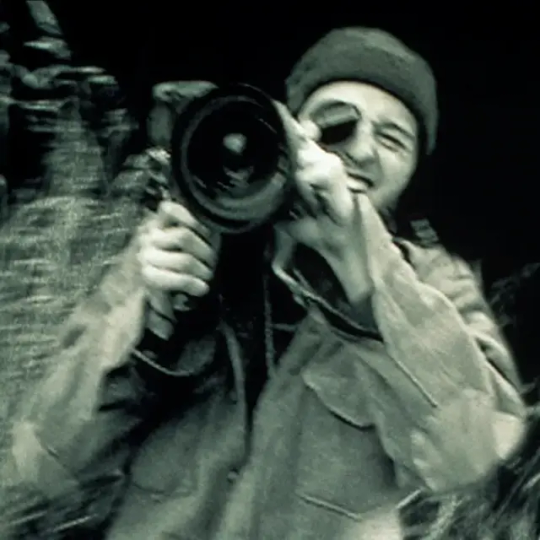
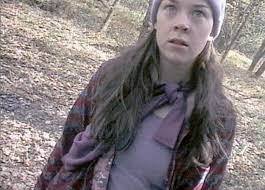
Roger Ebert also heaps praise on the director’s work, saying The Blair Witch Project is “an extraordinarily effective horror film, knows this, and uses it.” Ebert also discusses how the directors structured the film and how “...insidious in the way it introduces information without seeming to.” The film makes passing mentions in the opening scenes of children being abducted, killed, and bodies disappearing into the woods, but “...But the movie wisely doesn't present this information as if it can be trusted; it's gossip, legend and lore, passed along half-jokingly by local people, and Heather, Josh and Mike view it as good footage, not a warning.”
Eduardo Sánchez went on to produce more horror films throughout his career, including Seventh Moon (2008), a film about newlyweds honeymooning in China. In his review of the film, Adrian Halen has positive things to say, noting the mix of beautiful Chinese traditions and scenery combined with two American newlyweds. He also points out the shaky camera style used throughout the movie, similar to what was done in The Blair Witch Project.
youtube
0 notes
Text
Looking at The Blair Witch Project
The Blair Witch Project is about three student filmmakers (Josh, Mike, and Heather) who disappeared in the Maryland woods while they were shooting a documentary. The film consists of footage that was found a year after the students went missing. The opening scenes of the film show the motley crew of students preparing to venture off into the woods and asking people if they had heard about the Blair Witch, who the group is trying to find. After asking around about the myth of the Blair Witch, the group eventually arrives at the entrance to a trail leading into the woods. Later in the day, Mike and Josh get frustrated that they seem to be going in circles, with Heather reassuring them that she knows where they are. Later that night, the sounds from the previous night return, sounding like distant footsteps crunching on leaves & sticks. The next morning it is discovered that Mike kicked their map into the creek because “it wasn’t doing shit for us” according to Mike, resulting in the group becoming even more lost.

(A still from the movie, showing the town of Burkittsville, Maryland)
Later in the day, the group stumbles across what appear to be stick figures in the shape of humans hanging from trees. That night, they are startled by someone shaking their tent, with the students running away and hiding in the woods. Throughout the last third of the film, the group becomes distraught when they realize they’ve been traveling in the wrong direction. Josh also goes missing, with Mike and Heather trying desperately to find him, and hearing Josh’s screams that night. A bundle of sticks is found with Josh’s clothes covered in blood. At the end of the film, Heather and Mike find an abandoned house in the woods and decide to enter in the hopes of finding Josh. They enter the house, where they hear Josh’s voice screaming in agony. Mike runs into the basement to find Josh, but he is nowhere to be found. Mike and Heather get attacked by an invisible force, and the film ends.
youtube

(Main character Heather operating one of the two cameras used to shoot the film)
Throughout the film, sound plays a big role in building terror. There is no background music to build up suspense, with the film instead relying entirely on natural sound from the environment and actors creating noises in the distance. This style of sound design adds to the authentic feel of the film. Lighting was also used to show what the director wanted you to focus on. In particular, there is a scene with Heather apologizing to the camera, with only part of her face lit up to keep your attention on her and not on anything else in the background.

(Heather talking to the camera)
The lighting throughout the entire film was also done amateurly, with some shots having no light and others being lit with flashlights, again adding to the authentic feel and making this a found-footage film. In his 1999 review of the film, Roger Ebert further emphasizes these points when he says “The movie is like a celebration of rock-bottom production values--of how it doesn't take bells and whistles to scare us.” The Blair Witch Project was a widely successful film, arguably founding the modern-day genre of found footage and making over $248 million at the box office, all while being produced on a measly $60k budget and having 3 characters. The movie uses the first-person POV to make it feel like the audience is experiencing the events themselves.
0 notes
Text
An Overview of Found Footage Horror

Found footage is a sub-genre of the horror film category. Found footage differs from other types of horror sub-genres in that it is presented through the lens of the characters, who are filming themselves on some type of adventure. The films are comprised of footage that has been “found” so-to-speak, giving the sub-genre its name of found-footage. Actors typically perform cinematography themselves to make the film more authentic, including shaky footage and more natural acting. The film The Blair With Project can be categorized as a found-footage horror film. This clip from the film shows what a found-footage film looks like being shot from a character’s POV through the camera.

The Blair Witch Project, released in 1999, was one of the most popular found-footage films to be created. The film centers around three film students who “ventured into the Maryland woods in 1994 to shoot a documentary and then disappeared.” One of the main goals of the film, and of most found footage films, was to appear as real and authentic as possible. The directors, Eduardo Sanchez and Daniel Myrick, said “the lighting had to make sense, the sound couldn’t be great… there wasn’t going to be a soundtrack. It was just edited footage.” This style of filmmaking proved to be successful. The film was produced on a budget of $60k and made $248.6 million at the box office. Other films have been produced on small budgets but made millions in revenue, including The Last Broadcast, which “reportedly cost only $900, but made $4 million.”

Cannibal Holocaust, released in 1980 and directed by Ruggero Deodato, is often credited as being the first found-footage film. The movie tells a story about a film crew who disappeared in the Amazon rainforest while filming a documentary. A professor leads a rescue mission to save the crew, only to discover that the crew is dead. The professor takes the crew’s film reels and discovers extremely disturbing footage, including sexual violence, plenty of blood & gore, and people getting beaten to death.

(Director Ruggero Deodato)
Due to these displays of what can only be described as truly grotesque imagery, Cannibal Holocaust also happens to be a very controversial film. In fact, Deodato was initially charged with murder after the film’s release, as courts had been convinced that the actors were actually killed on-camera. These charges were dropped after it was revealed the actors were indeed alive after the film had aired. The film was also censored in the United States, Australia, Singapore, and many other countries for displaying excessive animal cruelty.

Found footage horror films, with a simplistic style of filmmaking, minimal special effects and a small cast, show that a compelling story could produce big results, even if the visuals and technical aspects of the film were not the best. This sub-genre is more convincing than more traditional types of horror who rely on elaborate storylines and make heavy use of VFX.
1 note
·
View note